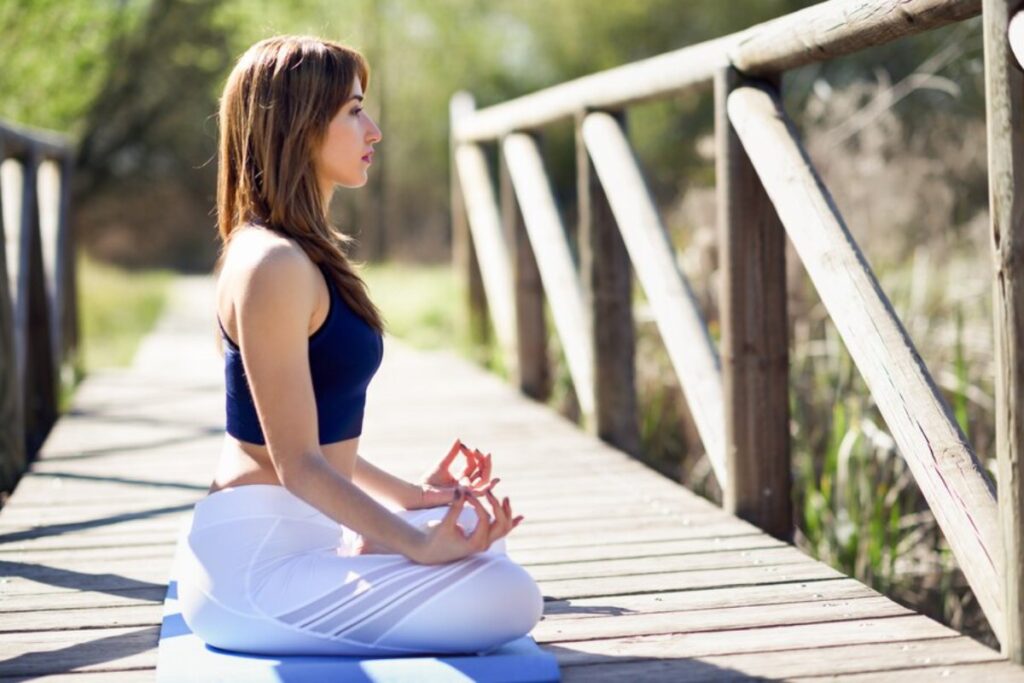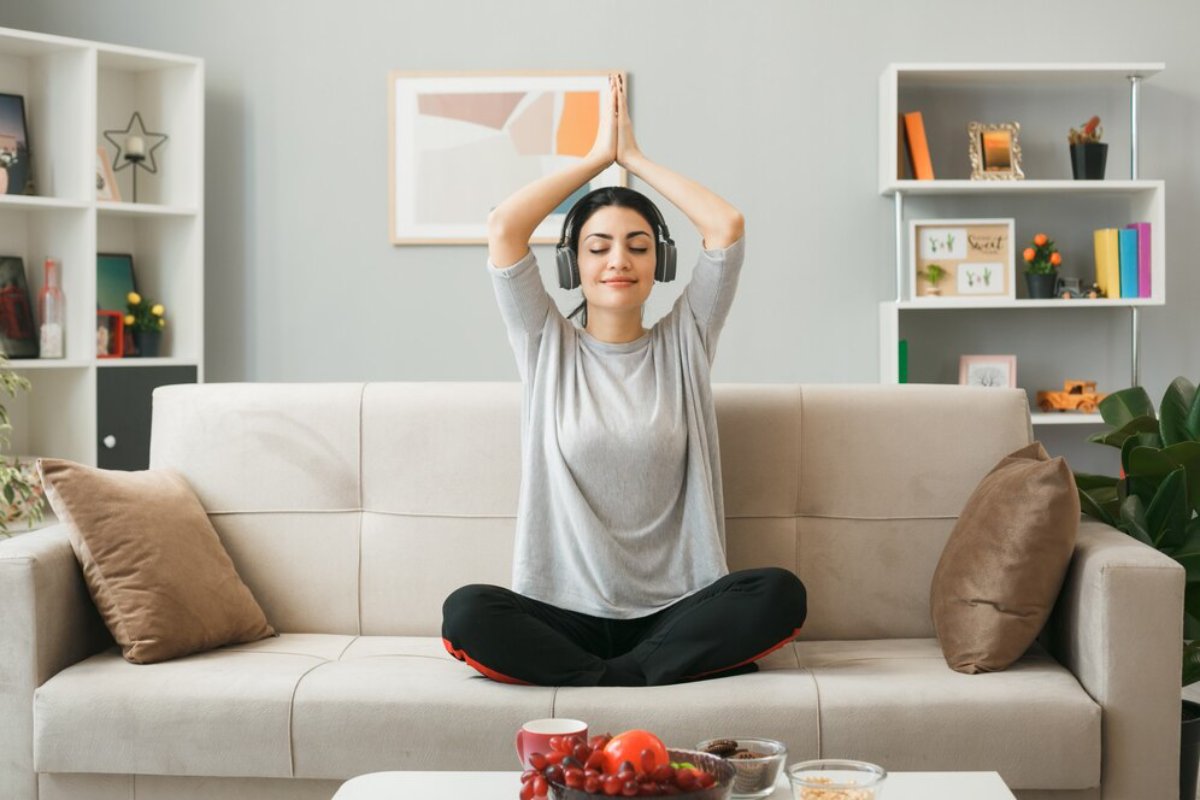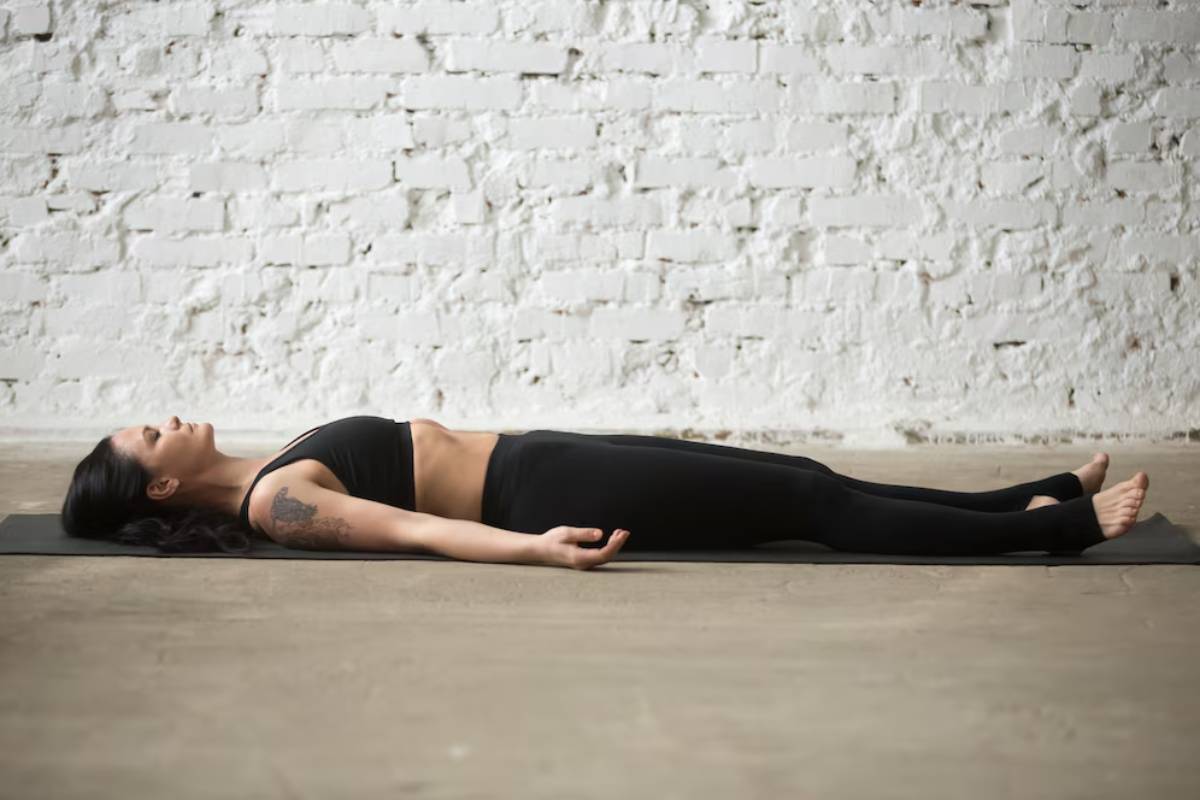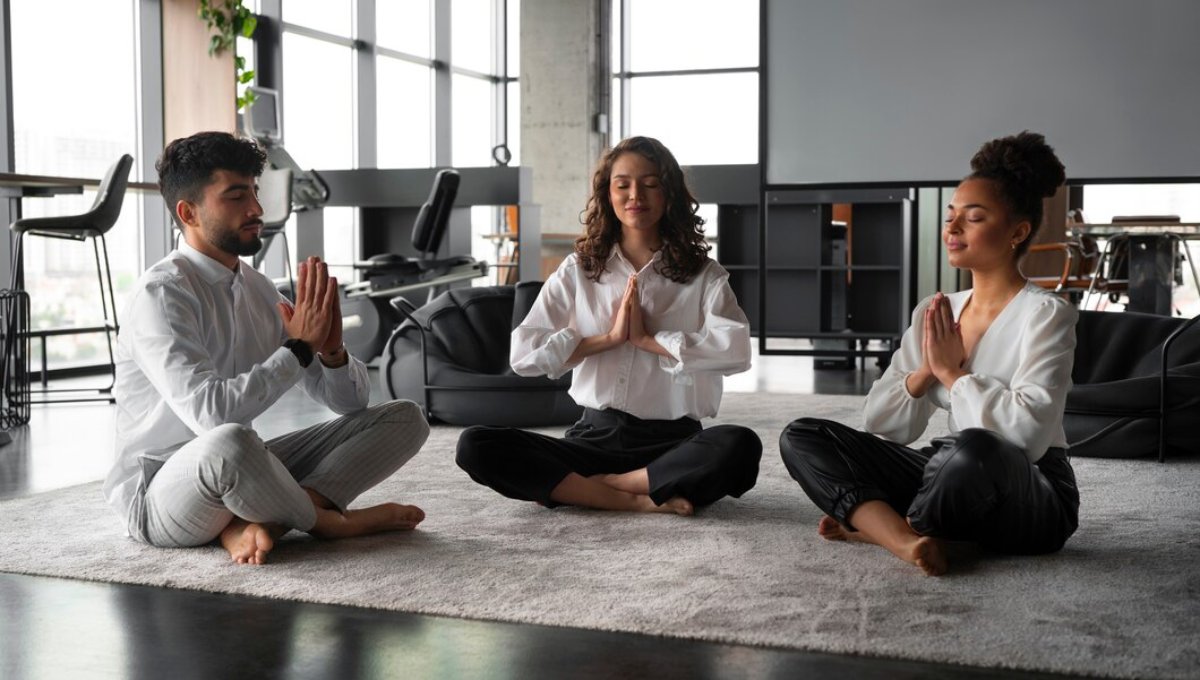The Yoga Blogs

Mindfulness Practices to Enhance Yoga Benefits
Has this ever happened to you that you are on the mat and your mind is absolutely somewhere else? You’re not alone. It’s all too easy for us to stray in our busy lives, even in the throes of yoga, a discipline intended to centre us.
This is where mindfulness comes in. Mindfulness, it turns out, isn’t just a fad. It’s not only a valuable tool based on yoga tradition and modern science. It can make your yoga practice complete.
This guide will teach you easy mindfulness practices. These practices can boost the mental and physical benefits of yoga. No matter if you’re a pro or just starting, these tips will boost your poses and your presence.
What Is Mindfulness in Yoga?
The Intersection of Attention and Intention
Mindfulness means fully focusing on the present moment without judgment. In yoga, this means being aware of your breath, body, and thoughts as you move through each pose.
Think of mindfulness as the thread that connects your yoga practice. Without it, your poses may look good, but feel disconnected. With it, every movement gains meaning.
Core elements of mindfulness in yoga include:
- Breath awareness: Notice each inhale and exhale.
- Bodily sensation: Tune into tension or ease.
- Mental focus: Observe thoughts without getting lost in them.
- Non-judgment: Let go of the need to “perform.”
Why Mindfulness Amplifies Yoga Benefits
A Deeper Mind-Body Connection
Yoga stretches and strengthens your body. Add mindfulness, and you gain a deeper awareness. Research in Frontiers in Psychology (2018) shows that mindfulness helps interoception. This is your ability to feel what’s happening in your body. It supports both emotional health and physical well-being.

Reduces Stress and Enhances Mood
Yoga lowers cortisol, the stress hormone. Mindfulness helps shift your focus from worries about the past and future to the present. This can reduce anxiety, improve sleep, and help prevent burnout.
Improves Mental Focus and Clarity
Ever find your mind wandering during Warrior II? Mindfulness sharpens your focus, helping you stay present even in challenging poses. Over time, this clarity extends into your daily life.
Simple Mindfulness Practices to Add to Your Yoga Routine
1. Start with Intention Setting
Before your first pose, ask yourself: Why am I here today? Setting an intention gives your practice purpose and helps refocus your mind if it drifts.
Try this:
- Sit or lie down comfortably.
- Close your eyes and take three deep breaths.
- Consider what you need today (e.g., peace, strength, patience).
- Whisper that word to yourself as your intention.
2. Breath-Centric Movement
Let your breath guide your body. Match each inhale with an upward movement (e.g., raising arms) and each exhale with a grounding movement (e.g., folding forward).
Why it works:
- Keeps you present.
- Regulates your nervous system.
- Reduces over-efforting.Bonus tip: Try Ujjayi breath (oceanic breath) during your flows. This slow, audible breath anchors your mind to the moment.
3. Body Scanning During Poses
Instead of rushing through poses, pause and notice what’s happening in your body.
In a forward fold, ask yourself:
- Where do I feel resistance?
- Can I soften anywhere?
- How is my breath responding?
This practice builds:
- Body intelligence.
- Injury prevention.
- Subtle awareness.
4. Anchor Attention with a Mantra
A mantra is a word or phrase you repeat silently to focus your mind. During long holds (like in Yin or Restorative Yoga), a mantra can keep you centred.
Examples:
- “I am here.”
- “This too shall pass.”
- “Inhale calm, exhale tension.”

5. Embrace Stillness in Savasana
Savasana isn’t just rest—it’s a sacred pause. Don’t rush it. Let yourself feel the residue of your practice while staying alert.
Mindful savasana tip: Focus on your breath or the weight of your body on the mat. If thoughts arise, gently return to your breath.
Mindfulness Off the Mat: Daily Practices That Complement Yoga
Your yoga practice continues even after you roll up your mat. In fact, that’s when it truly begins.
Micro-Moments of Mindfulness
You don’t need a long sit to practice mindfulness. Look for small moments throughout your day:
- Morning: Before getting out of bed, take three conscious breaths.
- Midday: Step outside and feel the sun or wind on your face.
- Evening: Notice the warm water during your shower.
Mindful Eating
How often do we rush meals or scroll through our phones while eating? Try enjoying one meal a day without distractions. Chew slowly and savor the textures. Your digestion and mood will improve.
Walking Meditation
Next time you walk, skip the podcast. Instead, feel the rhythm of your steps, the contact of your feet on the ground, and the sway of your arms. Walking becomes a moving meditation.
Common Challenges (and How to Overcome Them)
“I Can’t Stop Thinking”
That’s okay. The goal isn’t to have a blank mind but to notice when you’re lost in thought and gently return to the present.
Tip: Treat your thoughts like clouds passing in the sky. You don’t have to chase or fight them.
“I Don’t Have Time”
Mindfulness doesn’t require hours. Even 1-2 minutes of focused breathing can reset your nervous system. Start small and gradually build.
“I Forgot to Be Mindful”
Set cues. Place sticky notes on your mirror, wear a mindfulness bracelet, or set reminders on your phone to pause and check in.
Scientific Backing: Why Mindfulness Matters
Research supports what yogis have known for centuries:
- A 2011 study from Harvard found that mindfulness meditation may boost grey matter density in the hippocampus. This area is important for memory and learning.
- A 2020 review in JAMA Internal Medicine found that mindfulness helps lessen anxiety, depression, and pain.
- MRI scans show that regular mindfulness practice decreases activity in the amygdala, the brain’s stress centre.
These findings match what many practitioners say: they feel calmer, clearer, and more connected after adding mindfulness to their yoga.

Who Benefits Most from Mindful Yoga?
- Beginners who want a strong foundation.
- Busy professionals seeking stress relief.
- Athletes are looking to enhance performance and recovery.
- Seniors are aiming for gentle yet effective exercise.
- Anyone dealing with anxiety, insomnia, or burnout.
The Practice Within the Practice
Yoga isn’t just about mastering headstands or perfecting form. At its core, it’s about being present. Mindfulness shows the “why” of the “how.” It turns every pose into a moving meditation.
The great part is, mindfulness doesn’t require perfection. It’s about coming back — time and time again — to the moment you’re in. This is where the magic is.
Bring your thoughts along for the ride next time you unfurl your mat. Begin with any one of these mindfulness tips in this guide and just see the difference. In time, you’ll raise your yoga gains and grow to be a calmer, more present you.
Have you tested using mindfulness to practice? Tell us about it in the comments or, if the story might benefit a friend who could use a little more clarity today.









